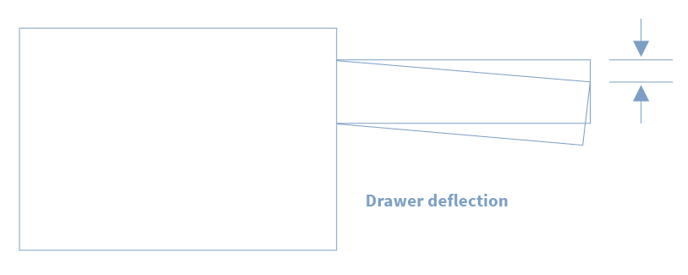Accuride provides a maximum load rating for all slides. This is the maximum load a pair of slides can support for a specified number of cycles, assuming that they are mounted in the application as recommended. This load is a gross load, so the mass of the drawer needs to be included in the calculations.
Cycle Rating refers to the number of endurance cycles the slide is tested to at the specified Load Rate. Accuride extensively tests all slides to simulate usage and environmental requirements. The cycle testing is a dynamic load test using dedicated machines to cycle loaded slides; one cycle is defined as a complete open and close of the slide. The number of tested cycles stated varies to suit the expected application with, for example, the Industrial and Electronic markets typically requiring between 2000 and 10000 cycles, and the Furniture market being between 50000 and 80000 cycles. The Cycle Rating is depicted as shown below:

All of our products are subjected to a static load test at full extension. The load applied will typically be at least twice that of the dynamic load test. This means the slide will have a 100% static load safety factor in the extended position. Deflection of the drawer and sliding element are measured during the dynamic test phase and this is correlated to the load and number of test cycles completed. For the furniture market, for example, DIN specifications define the allowable percentage of the extension this deflection can be.

Accuride tests its standard slides using uniform methods, with a drawer and a pair of slides, so that they can be compared easily. There are no standard tests for slides in isolation. If you have an application that is not a drawer, and Accuride slides can be found in many and varied types of applications, then we would recommend that you test the slides in your own application.
